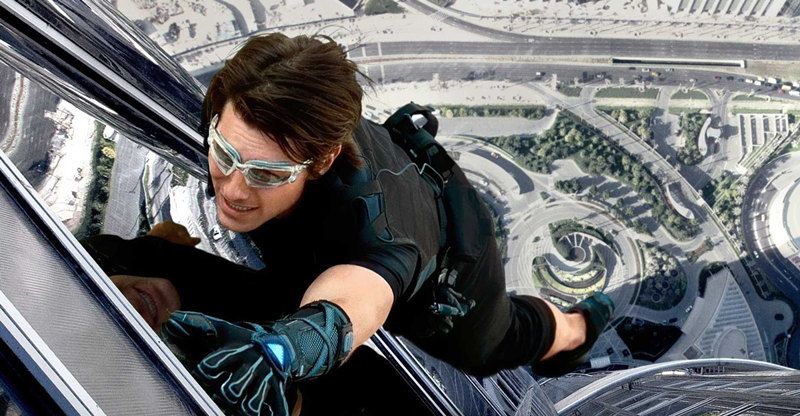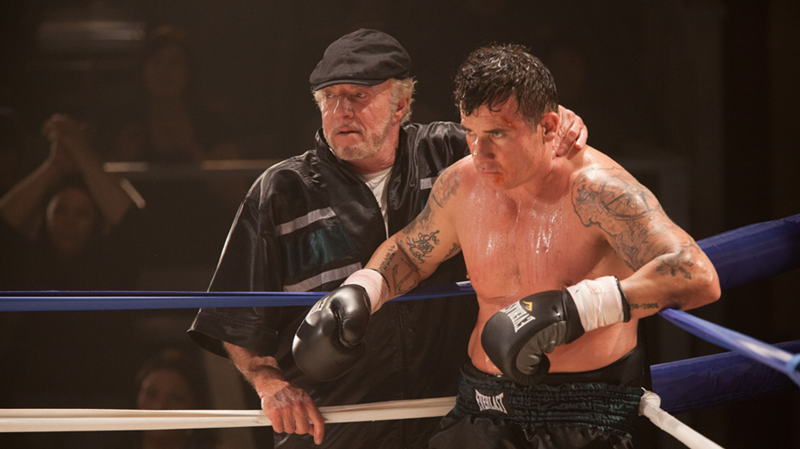Perhaps it is a bit difficult to understand why “Les Visiteurs du Soir” (1942) was a runaway commercial hit during the German occupation of France. The sumptuously staged medieval fairy tale must have been a sight for sore eyes in a country increasingly plagued by deprivation, but its tale of doomed lovers in a land where Satan stalks openly and God is missing in action can hardly be described as feel-good escapism. But then again, a fantasy setting counts for a lot. Who would have thought a story about a virgin forced to choose between necrophilia and bestiality would become the merchandise-friendly tween franchise of the century? Choose Team Necro!
For director Marcel Carné, the choice to mount a lavish production set in the 15th century while his fellow countrymen were consumed by more pragmatic concerns such as not starving to death was a controversial one. French filmmakers who had not already fled the country or gone into hiding had to decide whether or not to work within the new Nazi-controlled film industry: could they sneak subversive material past the censors or would they be labeled as collaborators for even filming at all when Goebbels and friends had the ultimate final cut?
Carné, who had already established himself as a commercial force and poetic realist before the Occupation, plowed ahead, and though he picked up many detractors in the process, he also produced a film that won critical praise, packed French theaters and even came to be embraced by some as an allegory for the great national nightmare.
With a script by the great poet Jacques Prévert and a young Pierre Laroche, Carné crafted a very grim(m) fairy tale with the would-be villains as the ostensible protagonists. Gilles (Alain Cuny) and Dominique (Arletty, in decidedly unconvincing drag) are sent by the devil to “drive humans to despair” and do so in the most reliable way of all: by making them fall in love.
Masquerading as wandering minstrels, they arrive at a castle where the Baron (Fernand Ledoux) is celebrating the impending wedding of his innocent daughter Anne (Marie Déa) and her ruthless paramour Renaud (Marcel Herrand). It is strictly a marriage of convenience, but everyone seems resigned to it until the ersatz minstrels pluck a tune that literally stops time, allowing Gilles to seduce Anne and Dominique (swapping tights for a dress) to work Renaud into a lather before returning the lovers to each other’s arm… but now with very different hearts. It’s one of several matter-of-fact magical effects in the film, a style that viewers today might identify more with Jean Cocteau’s “Orpheus” (1950).
These aren’t your typical demonspawn, however. We learn that Gilles and Dominique were once lovers, but since selling their souls to the devil, their love is wet ash. But where Dominique has embraced her new mission in life with icy gusto (she also spins her web of sorrow around the Baron), Gilles is awakened by Anne’s purity and finds himself under her spell. Where will this lead us? To the Devil, probably.
And his Beelzebub-ness indeed drops in on the festivities in the person of actor Jules Berry who portrays Satan-in-tights in a theatrical, almost campy fashion that makes him all the more menacing. Sadism is a mere pastime for a bored Prince of Darkness, but one he pursues with ever-increasing passion when he too is taken aback by Anne’s annoying but intoxicating goodness, shades of “Salo.”
Resistance proves to be futile but the powerless lovers hold out against the almighty tyrant nonetheless. And I suppose that makes it pretty easy to understand why it was a smash hit, after all, even if Carné remained adamant that the film was nothing more than a fairy tale, even long after there was no need to maintain the pretense for Nazi censors.
Carné’s legacy remains a point of contention even today – was he a true auteur or did he rely heavily on the greater talents of others like Jacques Prévert? – and “Les Visiteurs du Soir” has been eclipsed by his still widely-acclaimed “Children of Paradise” (1945). However, this movie retains a potent resonance in its simultaneously beautiful and chilling fatalistic vision.
The DVD blurb describes this as a “love conquers all” tale, but I don’t see it. Perhaps the most intransigently romantic viewer can unearth some inspiration from the love story and there is certainly a streak of mordant humor throughout the movie, but I can’t help but wonder why people who are standing face-to-face with the Devil himself never even toss out a tenuous lifeline to their favorite magical friend in the sky. If the devil’s irrefutable incarnation doesn’t even prompt you to pray to God, surely you have abandoned all hope.
Video:
The film is presented in its original 1.33:1 aspect ratio. This 1080p transfer renders the black-and-white images by cinematographer Roger in fine detail with a rich grainy texture. The black-and-white contrast is not particularly sharp, but I believe this is part of the visual design which doesn’t rely on too many hard shadows. For a film with a lot of characters in white shirts against white walls, there’s very little blending between foreground and background, usually a problem even on strong transfers. Only the faintest signs of damage from the source print are evident.
Audio:
The linear PCM Mono track isn’t particularly dynamic, but the dialogue is all clearly mixed. The music is a little thin at times, but nothing troublesome. Optional English subtitles support the French audio.
Extras:
Aside from a Trailer, all we get is “L’aventure des ‘Visiteurs du Soir.’” (2009, 37 min.), a documentayr on the making of the movie featuring interviews with author and friend of Carné, Didier Decoin, archivist Andrew Heinrich, film historian Alain Petit, and journalist Philippe Morisson. As you would expect, Carné had plenty of challenges pulling off such a big production in wartime France and this feature goes into some detail about the travails.
The 16-page insert booklet features an essay by critic Michael Atkinson.
Film Value:
Carné is better known today for the epic “Children of Paradise” and the pre-Occupation “Le jour se lève” (1939), but don’t dismiss “Les Visiteurs du Soir” as a “mere” fairy tale. It might actually be my favorite Carné film, and though the extras are sparse, I was very pleasantly surprised with this Criterion release.


